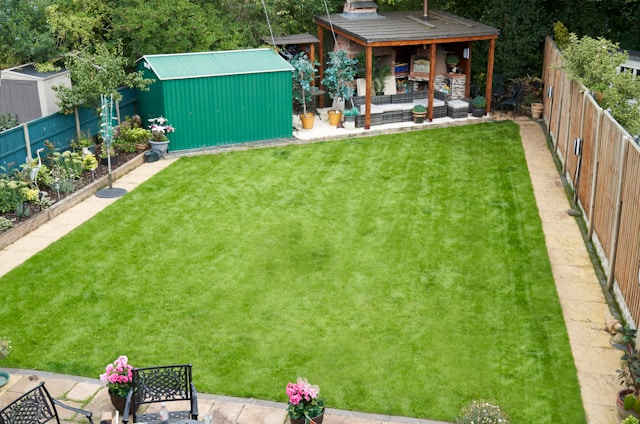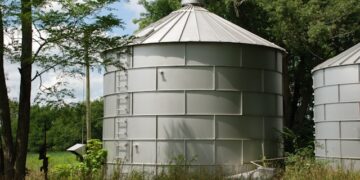Creating a beautiful outdoor space doesn’t have to come at the expense of the environment. Traditional lawn care practices often rely heavily on water, chemical fertilizers, and pesticides, all of which can harm local ecosystems and contribute to pollution. Fortunately, more homeowners are embracing sustainable lawn care and eco-friendly gardening tips to reduce their environmental footprint while still enjoying a lush, inviting yard.
Whether you’re a seasoned gardener or just getting started, there are many simple yet effective strategies to make your lawn and garden more sustainable. From planting native species to conserving water, every small step counts.
Choose Native and Drought-Resistant Plants
One of the easiest ways to support sustainable gardening is to choose native plants for your garden. Native species are adapted to your region’s climate, soil, and pests, which means they require less maintenance, water, and chemical intervention. These plants also support local wildlife, including pollinators like bees, butterflies, and hummingbirds.
In arid climates, drought-resistant plants such as lavender, yarrow, and sedum are excellent choices. In temperate zones, options like echinacea, black-eyed Susan, and native grasses offer beauty and resilience. By prioritizing native plants for garden spaces, you help create a more self-sufficient ecosystem that thrives naturally.
Reduce Lawn Size and Replace with Ground Covers or Garden Beds
Large expanses of traditional turfgrass require frequent mowing, watering, and fertilizing, which isn’t ideal for a sustainable landscape. One of the most impactful changes you can make is to reduce lawn size and replace it with more eco-friendly alternatives.
Ground covers like clover, creeping thyme, and moss provide a green carpet that requires little upkeep and no synthetic chemicals. You can also transform unused lawn areas into vegetable gardens, wildflower meadows, or pollinator gardens. These changes not only support biodiversity but also make your yard more visually dynamic and functional.
Practice Water-Wise Gardening
Water conservation is a key component of sustainable lawn care. Instead of relying on sprinklers that waste water through evaporation and runoff, opt for water-saving garden techniques like drip irrigation or soaker hoses, which deliver moisture directly to plant roots.
Using rain barrels to collect and reuse rainwater is another effective way to reduce water usage. Additionally, apply mulch around plants and beds to retain soil moisture, suppress weeds, and regulate temperature. Water your garden in the early morning or late evening to minimize evaporation and maximize absorption.
Go Organic: Avoid Chemical Pesticides and Fertilizers
Chemical fertilizers and pesticides can harm beneficial insects, pollute waterways, and degrade soil health over time. Instead, embrace organic lawn maintenance by using compost and natural soil amendments to nourish your plants.
For pest control, try companion planting or introduce beneficial insects like ladybugs and lacewings. Neem oil, garlic sprays, and insecticidal soaps are effective and less harmful alternatives to synthetic chemicals. Composting kitchen and yard waste not only reduces landfill use but also creates nutrient-rich soil to feed your garden naturally.
Encourage Biodiversity and Support Pollinators
A diverse garden is a healthy garden. Encouraging biodiversity creates a balanced ecosystem where beneficial insects, birds, and other wildlife help manage pests and support plant health. Planting a variety of flowers, shrubs, and trees that bloom at different times of year ensures continuous food sources for pollinators.
Add features like birdhouses, bat boxes, and insect hotels to provide shelter for native species. Avoid invasive plants that disrupt local ecosystems, and instead, choose species that offer habitat and nourishment to wildlife.
Use Sustainable Lawn Care Tools and Techniques
Your tools matter, too. Swap out gas-powered lawn equipment for electric or manual alternatives to reduce air and noise pollution. Reel mowers, battery-powered trimmers, and hand tools are efficient and environmentally friendly.
Adopt lawn care techniques that promote strong, healthy turf with less input. For instance, mowing high (keeping grass around 3 inches tall) encourages deep root growth and shades out weeds. Aerating your lawn and testing soil regularly can help you make informed decisions about amendments without overdoing it.
Conclusion
Creating a more sustainable lawn and garden doesn’t require a complete overhaul—just a commitment to making smarter, more eco-conscious choices over time. By reducing lawn size, embracing native plants, conserving water, and avoiding harmful chemicals, you can nurture a vibrant outdoor space that’s both beautiful and beneficial to the environment.








